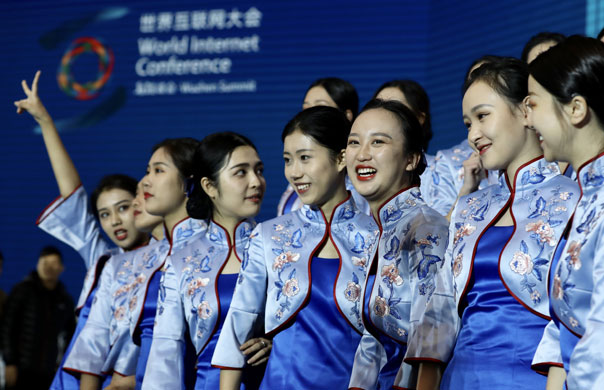A step toward RMB internationalization
The European Central Bank's announcement of a new $350 billion swap agreement with the People's Bank of China on Oct 10 comes at a curious time.
Namely, we suspect that the current dysfunction in Washington may have accelerated the ECB's discussions on the matter and may have tipped the scales in favor of early approval. We tend to think of China's push for swap agreements with other central banks as a key step toward the internationalization of the renminbi. These swap agreements greatly facilitate the widespread use of the RMB in everyday trade transactions.
In particular, if a central bank has ready access to RMB directly from the PBOC, then local banks are much more willing to offer trade financing in RMB to local companies, thereby enhancing its use. For Chinese companies, the direct swap agreements and settlement in RMB reduces the costs of using an intermediary currency such as the US dollar.
In the lingo of the IMF, the swap agreements now with at least 21 central banks including the Bank of England help to make the RMB "widely tradeable", which in turn is a key step toward the hallowed status of becoming a reserve currency.
The other condition is more difficult to achieve namely, the RMB needs to become "widely used" in international transactions. Some of the main criteria used by the IMF to assess the breadth and depth of currency usage are:
1. Currency composition of reserves (possible supplementary indicators: (I) number of countries holding a currency in reserves; and (II) other foreign currency holdings by monetary authorities)
2. Currency denomination of international banking liabilities
3. Volume of transactions in foreign exchange derivatives markets and over the counter derivatives trade
4. Currency denomination of international debt securities
As one can see from the list, "widely used" entails far greater dimensions than "widely traded" and requires China to move much closer to an open capital account in which foreigners can gain access to RMB-denominated bonds and Chinese savers can gain access to foreign securities. Development of a sovereign yield curve and domestic corporate debt and derivatives markets will take time and will require a well-honed regulatory framework. The PBOC has been actively engaged in these initiatives for several years and one can expect a steady stream of reforms to be announced in the months and year ahead.
In a way, the self-inflicted wounds of the US Congress and quantitative easing by Western central banks have provided a golden opportunity for China to pursue its strategy to internationalize the RMB. China has no other choice if it wants to remain a dominant player in international trade, which of course it does now that almost half the economy is oriented toward exports.
The hard part is to manage the consequences of opening the capital account in the context of legacy issues at home namely the crawling peg for the currency and the overhang of structured products in the shadow banking sector as well as conditions abroad where interest rates are much lower than domestic rates and are likely to remain so for quite awhile, thereby raising the specter of unwanted "hot money" inflows.
The PBOC must deal with the transition issues but can move no faster than its internal regulatory and market reforms that underlie the liberalization of capital flows. Hence, the complex issues related to access and "widespread usage" of the RMB are likely to take longer than the blinding speed at which the RMB has become the world's eighth most actively traded currency, but the end result no doubt will be the same. We are expecting the IMF to name the RMB as an official reserve currency sometime within the next four or five years.
The author is an economist at Stratton Street Capital, a London-based fixed income manager with a renminbi bond fund.

























